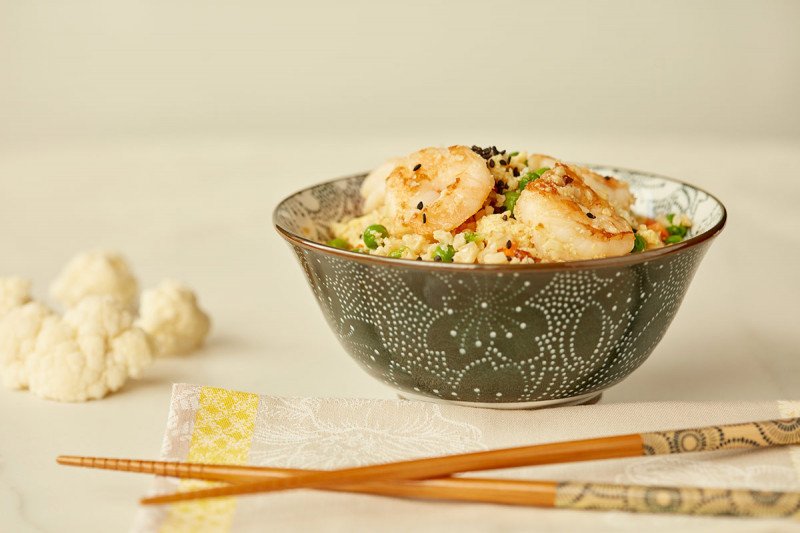
- What is the low-calorie diet?
- Are there other names for this diet?
- How does this diet help people who are undergoing cancer treatment?
- What are the basic guidelines of the low-calorie diet?
- What are the foods you can eat on the low-calorie diet?
- What are foods to avoid on the low-calorie diet?
- Are there medications to avoid while on this diet?
- What are some of the common complaints from people on the low-calorie diet, and how do you solve them?
- What are some tips for people on this diet?
What is the low-calorie diet?
The low-calorie diet is an eating plan used to help people lose weight. It involves limiting the overall number of calories you eat or drink in a day. A dietitian can work with you on figuring out the right number of calories for you per day, structuring your meals, and finding the right portions for your food choices.
Are there other names for this diet?
Another name for the low-calorie diet is the weight-loss diet.
How does this diet help people who are undergoing cancer treatment?
Some cancer treatments can cause people to gain weight over time. In particular, corticosteroid and hormone therapies can cause weight gain. The low-calorie diet helps people prevent weight gain during treatment or lose weight after treatment.
If you were overweight at the time of your cancer diagnosis, you may want to talk to your doctor about going on a low-calorie diet. You might also consider a weight-loss plan that includes diet and exercise. Obesity has been linked to a poorer prognosis for several cancers, including breast cancer, colon cancer, esophageal cancer, and tongue cancer. It can also contribute to a higher risk of prostate cancer, ovarian cancer, and endometrial cancer. Learn more about the link between obesity and cancer risk.
What are the basic guidelines of the low-calorie diet?
The three basic principles of the low-calorie diet are:
- Avoid high-calorie foods.
- Monitor portion sizes to prevent overeating.
- Avoid sugary drinks.
You can eat any food you want as long as you do so in moderation. One thing to keep an eye on is energy-dense foods. These foods provide more calories per bite. Not all energy-dense foods are bad for you. Two examples of good energy-dense foods are nuts and avocados. However, you should eat less of these foods to minimize the overall number of calories you take in.
What are the foods you can eat on the low-calorie diet?
| FOOD GROUPS | FOODS TO INCLUDE |
|---|---|
| Milk and Dairy Products | Low-fat milk Low-fat lactose-free milk Low-fat plain yogurt (Greek or traditional) Low-fat cottage cheese Milk alternatives (soy, almond, coconut, cashew, and hemp milks) |
| Vegetables | All fresh vegetables All frozen vegetables Low-sodium canned vegetables (should be drained and rinsed) |
| Fruit and Juices | All fresh fruit All frozen fruit Juice with no sugar added |
| Breads and Grains | Whole-wheat products, including bread, pasta, crackers, and cereals Brown rice Oats Quinoa Barley Plain air-popped popcorn |
| Meats and Meat Substitutes | Skinless, boneless chicken or turkey Loin or round cuts of meat (beef, pork, and lamb) Fish Shellfish Eggs and egg whites Dried beans and peas Low-sodium canned beans (should be drained and rinsed) Tofu Tempeh Nuts (limit to 1 ounce per serving) Nut butters (limit to 2 tablespoons per serving) Seeds |
| Fat | Olive oil (limit to 1 tablespoon per serving) Canola oil (limit to 1 tablespoon per serving) Nut or seed oils (limit to 1 tablespoon per serving) Avocados (limit to ½ avocado per serving) Low-fat mayonnaise (limit to 2 tablespoons per serving) Whipped butter (limit to 1 tablespoon per serving) |
| Beverages | Water Sparkling water Tea Coffee |
What are foods to avoid on the low-calorie diet?
| FOOD GROUPS | FOOD TO LIMIT |
|---|---|
| Milk and Dairy Products | Full-fat milk or yogurt Full-fat natural cheeses (mozzarella, Swiss, Muenster, Cheddar, provolone, and Gouda) Processed or packaged cheeses (American and most cheese spreads) Pudding Heavy cream, light cream, and half-and-half Ice cream |
| Vegetables | Fried vegetables, such as French fries |
| Fruit and Juices | Canned fruit in syrup Sweetened fruit juice Dried fruit Jams and jellies |
| Breads and Grains | Sugar-sweetened cereals Baked goods, such as cookies, cakes, pies, and pastries |
| Meat and Meat Substitutes | Fatty or marbled meat Poultry with skin Breaded and fried meat, poultry, fish, or shellfish |
| Fat | Vegetable oil Lard Full-fat mayonnaise Butter |
Are there medications to avoid while on this diet?
No. If you are unsure, ask your doctor or dietitian.
What are some of the common complaints from people on the low-calorie diet, and how do you solve them?
| COMPLAINT | SOLUTION |
|---|---|
| It’s too much work. | Set aside time to plan and prepare your meals and snacks. |
| I’m hungry all the time. | Drink water or other calorie-free beverages before you reach for food. Oftentimes we think we are hungry when we are actually thirsty. Include a protein-rich food in all your meals. Fill up on foods with a high fiber and water content. Include small snacks between your meals. Go for a walk. Many times we reach for food because of boredom rather than true hunger. |
| I don’t like whole grains. | Use just half of the whole grains in recipes, like brown rice mixed with white rice, to help improve the taste. |
| I don’t like vegetables. | Sneak vegetables into omelets, pasta sauces, or casseroles. Include legumes, whole grains, and fruits to help get more vitamins and minerals. |
What are some tips for people on this diet?
- Space meals and snacks evenly throughout the day. This will prevent you from overeating at the next meal and will keep your body fueled all day long.
- Use healthier cooking methods, like baking, roasting, broiling, stewing, or grilling instead of frying. Cooking foods in broth or water instead of oil can also help reduce your calorie intake.
- Use measuring cups and spoons to measure appropriate portion sizes.
- Track what you are eating throughout the day to help stick to your eating plan. You can use a pen and paper, keep notes on your phone, or try an app or website, such as MyFitnessPal or LoseIt.












